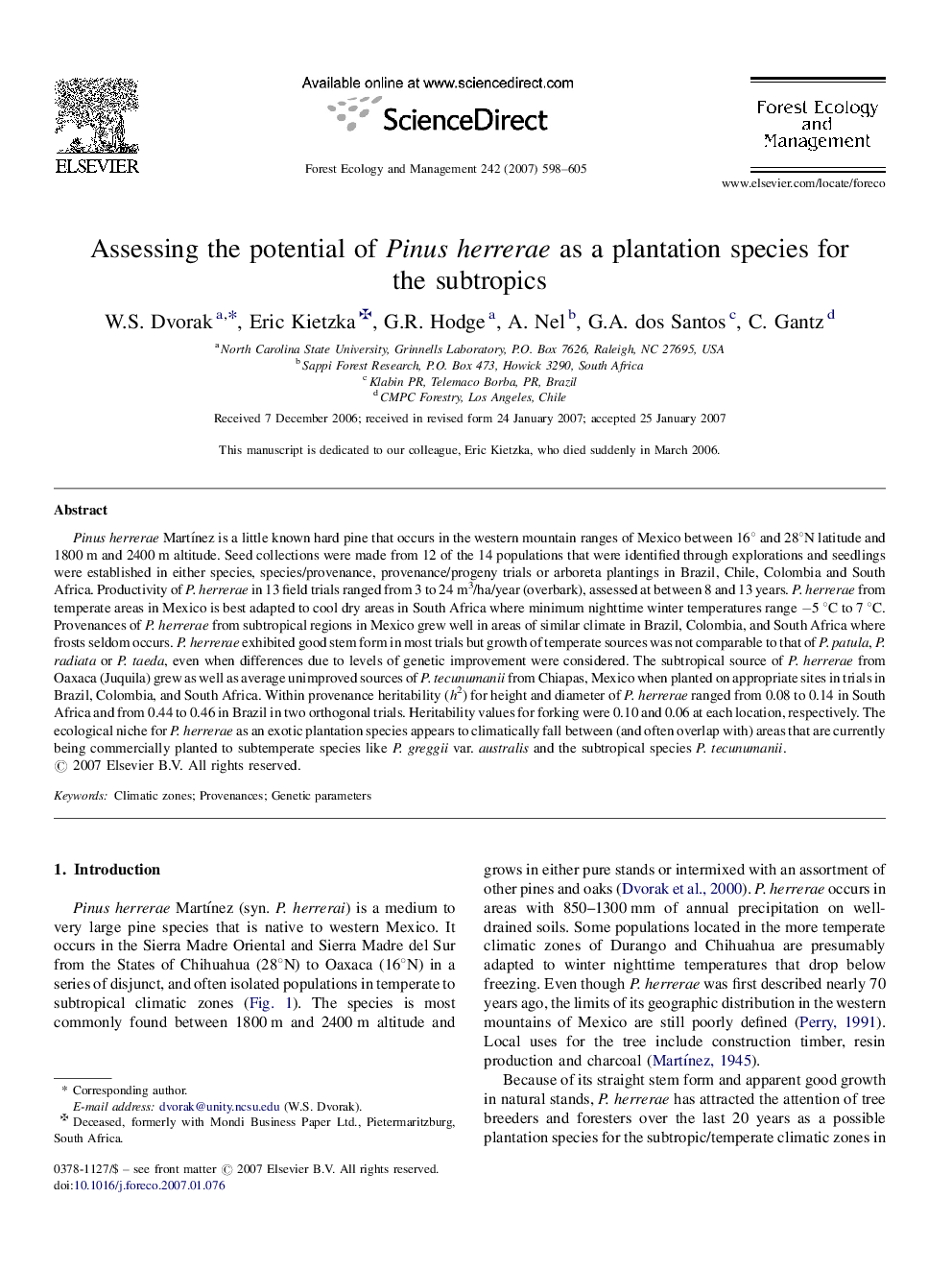| کد مقاله | کد نشریه | سال انتشار | مقاله انگلیسی | نسخه تمام متن |
|---|---|---|---|---|
| 90671 | 159391 | 2007 | 8 صفحه PDF | دانلود رایگان |

Pinus herrerae Martínez is a little known hard pine that occurs in the western mountain ranges of Mexico between 16° and 28°N latitude and 1800 m and 2400 m altitude. Seed collections were made from 12 of the 14 populations that were identified through explorations and seedlings were established in either species, species/provenance, provenance/progeny trials or arboreta plantings in Brazil, Chile, Colombia and South Africa. Productivity of P. herrerae in 13 field trials ranged from 3 to 24 m3/ha/year (overbark), assessed at between 8 and 13 years. P. herrerae from temperate areas in Mexico is best adapted to cool dry areas in South Africa where minimum nighttime winter temperatures range −5 °C to 7 °C. Provenances of P. herrerae from subtropical regions in Mexico grew well in areas of similar climate in Brazil, Colombia, and South Africa where frosts seldom occurs. P. herrerae exhibited good stem form in most trials but growth of temperate sources was not comparable to that of P. patula, P. radiata or P. taeda, even when differences due to levels of genetic improvement were considered. The subtropical source of P. herrerae from Oaxaca (Juquila) grew as well as average unimproved sources of P. tecunumanii from Chiapas, Mexico when planted on appropriate sites in trials in Brazil, Colombia, and South Africa. Within provenance heritability (h2) for height and diameter of P. herrerae ranged from 0.08 to 0.14 in South Africa and from 0.44 to 0.46 in Brazil in two orthogonal trials. Heritability values for forking were 0.10 and 0.06 at each location, respectively. The ecological niche for P. herrerae as an exotic plantation species appears to climatically fall between (and often overlap with) areas that are currently being commercially planted to subtemperate species like P. greggii var. australis and the subtropical species P. tecunumanii.
Journal: Forest Ecology and Management - Volume 242, Issues 2–3, 30 April 2007, Pages 598–605